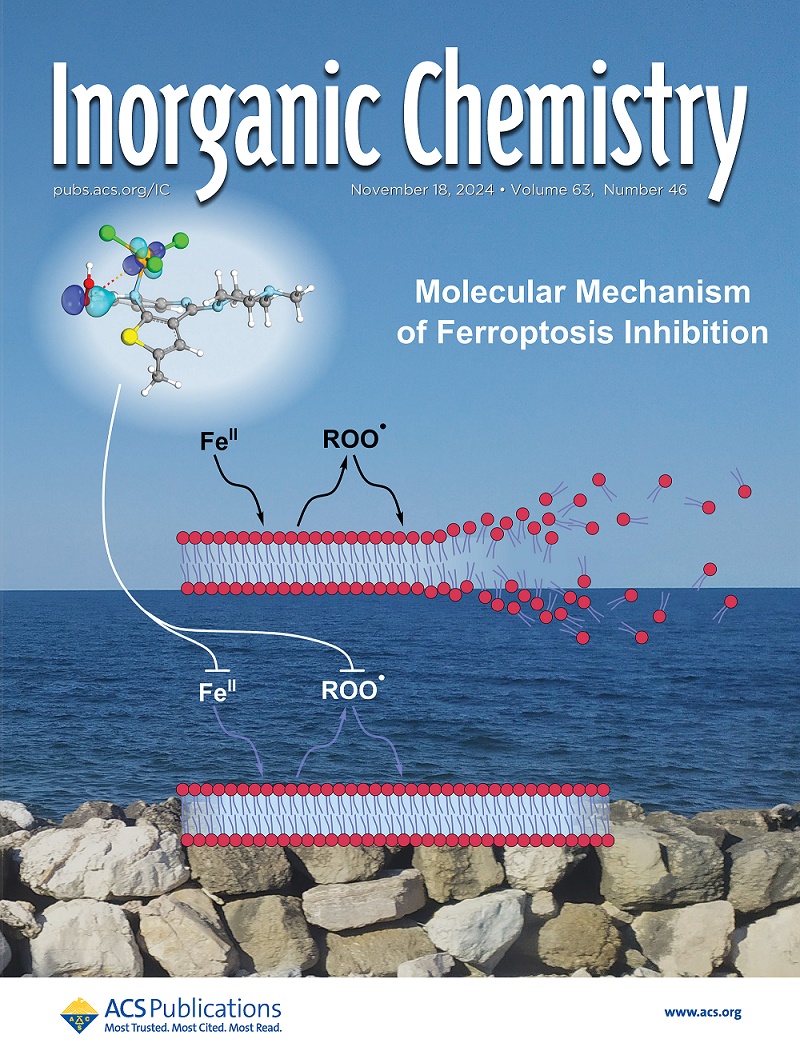在介孔二氧化硅中限制工程FeS纳米颗粒以增强汞固存和甲基化抑制。
IF 4.7
2区 化学
Q1 CHEMISTRY, INORGANIC & NUCLEAR
引用次数: 0
摘要
由于汞污染对人类健康的严重威胁,解决汞污染问题是一项紧迫的优先事项。然而,传统方法存在产生高毒性甲基汞(MeHg)的风险,因此需要先进的策略来降低汞在修复中的生物利用度。为了解决这一挑战,我们开发了一种纳米限制策略,利用介孔二氧化硅纳米颗粒(MSNs)作为载体,将高度分散的纳米颗粒锚定在孔内,以固定Hg(II)。与均相共沉淀法合成的FeS相比,合成的纳米限制性FeS (FeS@MSNs)具有更强的吸附动力学,其拟二级吸附速率常数为5.50 × 10-5 g FeS/(mg·min),最大吸附量为1815.95 mg/g FeS,并且具有更好的抗环境干扰能力。重要的是,孔的大小限制效应阻止了甲基化细菌接近固定的汞,从而抑制了97%的甲基汞的产生。结合光谱和微观证据,FeS@MSNs优先通过在孔隙内形成硫化汞(HgS)沉淀而不是通过表面吸附或整体沉淀来去除Hg(II)。这项研究为纳米限制如何提高纳米材料的性能和降低重金属的长期生物利用度提供了有价值的见解,展示了多种重金属修复应用的潜力。本文章由计算机程序翻译,如有差异,请以英文原文为准。
Confining Engineered FeS Nanoparticles in Mesoporous Silica for Enhancing Mercury Sequestration and Methylation Suppression.
Addressing mercury (Hg) contamination is an urgent priority due to its severe threats to human health. However, conventional approaches pose risks of generating highly toxic methylmercury (MeHg), highlighting the need for advanced strategies to reduce Hg bioavailability in remediation. To address this challenge, we developed a nanoconfinement strategy utilizing mesoporous silica nanoparticles (MSNs) as carriers to anchor highly dispersed mackinawite (FeS) nanoparticles within the pores for Hg(II) immobilization. Compared to FeS synthesized via homogeneous coprecipitation, the synthesized nanoconfined FeS (FeS@MSNs) exhibited enhanced adsorption kinetics with a pseudo-second-order adsorption rate constant of 5.50 × 10-5 g FeS/(mg·min) and a maximum adsorption capacity of 1815.95 mg/g FeS, and improved resistance to environmental interference. Importantly, the size confinement effect of the pores prevented methylating bacteria from accessing immobilized Hg, thereby inhibiting MeHg generation by 97%. With a combination of spectroscopic and microscopic evidence, FeS@MSNs preferentially removed Hg(II) by forming mercury sulfide (HgS) precipitates within the pores rather than via surface adsorption or bulk precipitation. This study provides valuable insights into how nanoconfinement enhances nanomaterial performance and reduces the long-term bioavailability of heavy metals, demonstrating potential for diverse heavy metal remediation applications.
求助全文
通过发布文献求助,成功后即可免费获取论文全文。
去求助
来源期刊

Inorganic Chemistry
化学-无机化学与核化学
CiteScore
7.60
自引率
13.00%
发文量
1960
审稿时长
1.9 months
期刊介绍:
Inorganic Chemistry publishes fundamental studies in all phases of inorganic chemistry. Coverage includes experimental and theoretical reports on quantitative studies of structure and thermodynamics, kinetics, mechanisms of inorganic reactions, bioinorganic chemistry, and relevant aspects of organometallic chemistry, solid-state phenomena, and chemical bonding theory. Emphasis is placed on the synthesis, structure, thermodynamics, reactivity, spectroscopy, and bonding properties of significant new and known compounds.
 求助内容:
求助内容: 应助结果提醒方式:
应助结果提醒方式:


